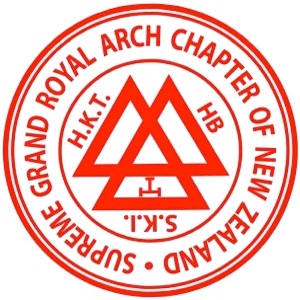Why Is The Mark Degree Special?
Gary Kerkin GLec PZ Piako RA Chapter No 48, PZ Ohinemuri RA Chapter No 17
The English System of Freemasonry considers the Mark Degree to be of such importance that it has a distinct and separate organisation which operates Lodges of Mark Master Masons with its own Grand Hierarchy. The Scottish, Irish and New Zealand Systems on the other hand embody Mark Lodges within their Royal Arch Structures. Which does not mean that it is considered any less important than is its position in the English System — just that its administration is handled differently.
Why is it considered of such importance?
To get a clear picture it needs to be remembered that early in the 18th century there were two degrees only in Craft Freemasonry — the Entered Apprentice Degree and the Fellow Craft Degree. A Brother was not deemed a “Master Mason” until he had been installed into the Chair of a Lodge. The Third Degree as we know it was introduced some time after the formation of the Premier Grand Lodge in London on 24 June 1717. Of this Laurence Gardner writes in “The Shadow of Solomon”:
“ … a rather more than adequate 3rd degree already existed. It was much older, and had evolved quite separately from Craft Freemasonry, with records of a Scottish working as far back as 1590 in Stirling. Laurence Dermott, Grand Secretary of the Antients, explained to the Moderns that he knew of this degree, which existed quite independently of the Craft, and that he firmly believed it to be the ‘the root, heart, and marrow of Freemasonry’, but he was ignored.”
Gardner may, or may not be right. Whether the Royal Arch is more appropriate than the Third Degree will always be moot. There can, however, be little doubt that the Ceremonies of the Royal Arch explain the gaps in the story portrayed in the Ceremonies of Craft Masonry.
So why is the Mark Degree important to us? The First Degree establishes the concept of a work ethic founded on the principles of labour, accuracy and perseverance; the Second Degree tells us that the work ethic must be supported by a parallel development of the intellect. The Third Degree introduces a spirituality reinforced by the principle of fidelity and illustrated by a legend based on the building of King Solomon’s Temple. They teach us a sense of hierarchy and a balance of discipline and equality. There are however, huge gaps in the stories. What was the importance of the hierarchy? How was the work force organised. What was the command structure? What quality controls were put in place to ensure the soundness of the building?
We get much about this from the Ceremony of the Mark Master Masons Degree. The Ceremony tells us how the work force was organised — how it was classified; who taught whom; how it was paid; the methods used to protect the status of each workman; how the instructions for the work were conveyed to the workmen; how the work was checked, rechecked and checked again before being considered good enough for the Temple; and just how important every little bit of the work was to the completion of the whole.
Chronologically it fills the gap between the first two Degrees and the Master Mason Degree since the first two imply the building of the Temple while the latter implies events near its completion. Metaphorically it reinforces the concepts of the work ethic of the First Degree and the principles of hierarchy whilst demonstrating the application of the control of the quality of the finished product. It provides a basis for the structure of the governance of a Lodge and the organisation of its various components.
Is there a message to be conveyed in this? Of course there is. Ask a Craft Mason who is not a Royal Arch Mason if he fully understands the work ethic of the First Degree and why a Lodge is organised the way it is? If he is unsure then talk to him about the lessons of the Mark Degree and suggest there is much more to be learned in the Royal Arch.
Copyright © Gary N Kerkin, SGRACNZ, 2008
SGRACNZ
royalarch.org.nz
